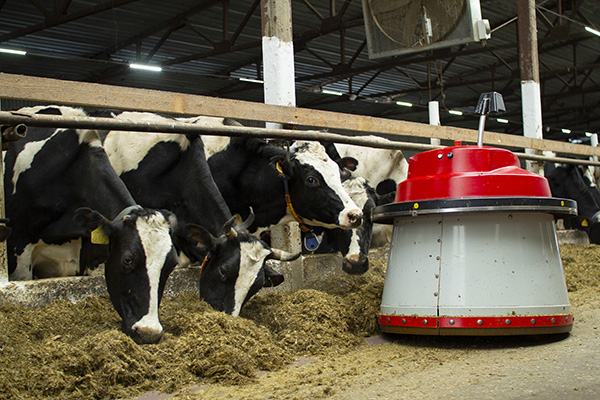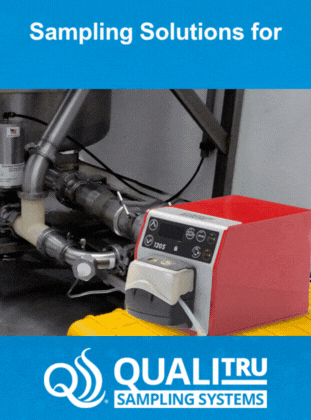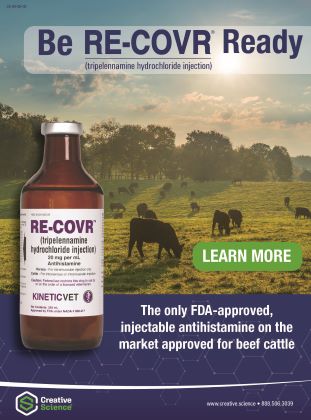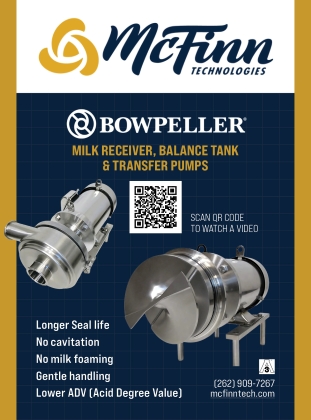Dairy Smarter with Digital Data

Dairy Smarter with Digital Data
In today’s dairy industry, data collection has become much more than just a convenience. Management software has evolved from humble beginnings to powerful tools for making informed decisions that drive efficiency and profitability.
Data provides an objective look at what’s happening on the farm, helping producers fine-tune their management practices for better outcomes. Whether it’s adjusting feed refusals to cut costs or analyzing herd performance to boost milk yields, leveraging data has become essential in navigating the ever-evolving landscape of modern dairy farming.
Data and Information Tools
There are numerous tools available for collecting and analyzing both cow and calf data, and it seems there are new offerings coming out all the time to provide more and better insights that can improve profitability.
Navigating the options can sometimes feel overwhelming, but the good news with so much choice is that chances are there is something on the market that can serve your unique needs. Let’s start with a look at where we were and how we got here.
Traditional herd management software, such as PC Dart and DairyComp 305, laid the foundation for digital recordkeeping and analytics in dairy operations. These programs were among the first to provide a means for seamlessly analyzing objective, on-farm data. This made it a breeze to track reproduction, health events, milk production and feed efficiency.
But a challenge with these types of systems is that they rely on human data input. In other words, the results are only as good and reliable as what you’re reporting.
In recent years, automated systems and robotic technologies have revolutionized data collection with a hands-off approach that collects data in real time. Think of tools like automated milking systems (AMS), such as those from Lely, DeLaval, and GEA, that not only reduce the labor required for milking but also continuously gather data on milk yield, udder health, and cow activity.
Wearable Technology
Beyond milking robots, sensor-based monitoring systems have further enhanced data collection. Wearable technology, such as collars and ear tags from companies like Allflex (SCR), CowManager, and Nedap, tracks cow movement, rumination, temperature, and estrus activity, helping producers with heat detection, health monitoring, and early illness intervention. These systems reduce reliance on visual observation and improve reproductive efficiency.
For calf management, automated calf feeders from brands like Holm & Laue, Förster-Technik, and Urban track individual intake, growth rates, and feeding behavior, ensuring optimal nutrition and early disease detection. These feeders integrate with farm management software to provide a comprehensive overview of calf health and development.
As farms continue to adopt these advanced technologies, the ability to collect, analyze, and apply data will play an even greater role in improving efficiency, sustainability, herd performance and all-around innovative management. If you can dream of something to improve your farm, chances are good data and analytical tools can help you achieve it.
Managing Data and Info
A challenge of data collection (and justifying the hefty extra expense) is knowing how to manage and utilize it. Managing the data can be just as, if not more, overwhelming than choosing the initial system to collect the data you want.
While these systems tend to come with their own associated software and instructions for recordkeeping, a learning curve is still to be expected. Not only do these systems require hands-on monitoring, but also someone who has the skill to make changes and respond to the insights as needed.
With the rise in popularity of artificial intelligence, or AI, it is worth noting that more of these systems are also using their own modes of AI to help analyze and provide recommendations. This can certainly make using these systems notably easier, but they still require skillful human oversight.
This circles back to the initial investment and why you chose to make it. You and your team should always be asking what to improve on your dairy. Do you want to cut costs, see how you can better monitor and analyze your feeding data? Have you seen a spike in health costs and want to track movement and health?
Make sure all your systems are serving your needs. If they are not, make sure you are using their full potential and reviewing them properly. Consider a chat with customer support to see if it is still worth the investment or if more learning is required. Remember these things are simply tools, they are not miracle workers and won’t do a thing if you are unable or unsure of how to utilize them and not adjusting your management.
Utilization
As mentioned previously, the information and data that comes out is only as good as what is input or tracked. On top of having accurate data and being able to apply it, there should be an understanding of all the nuances that come with it.
For example, some of the “issues” that come along with all this data availability are the privacy and rights associated with that data. Digitalizing more information also leaves you more vulnerable to cybersecurity attacks.
“Data ownership problems often intersect with privacy concerns. Farmers may hesitate to provide precise operational data, fearing losing a competitive edge or facing unwelcome scrutiny,” reads a Bullvine article, How Data Collection Can Revolutionize Your Dairy Farm.
“Legal frameworks must address these issues by ensuring farmers maintain ownership over their data and understand how it is used and shared. Furthermore, strong privacy safeguards are required to protect sensitive data from illegal access and breaches.”
The article also notes that farmers should implement robust cybersecurity practices to safeguard their data, including encryption, restricted access, and regular security audits. Working with trustworthy service providers that adhere to industry standards and regulations can enhance data protection. Additionally, establishing a well-defined data governance strategy that outlines data-sharing protocols and privacy guidelines is essential for maintaining data integrity.
Conclusion
In today’s rapidly advancing agricultural landscape, data has become one of the most powerful tools a farmer can wield, especially with the integration of artificial intelligence. From wireless monitoring systems in freestalls to advanced analytics inside robotic milking systems and parlors, data-driven insights are transforming herd management like never before.
The sheer wealth of information available can make you feel overwhelmed. The key is to stay focused on the core objective: using data to drive better decisions for herd health, productivity, and overall farm efficiency. Rather than getting lost in the complexities, farmers should prioritize the metrics that matter most to their operation, ensuring that technology serves as an asset rather than a burden.
By embracing strong cybersecurity measures, partnering with reliable service providers, and implementing clear data governance strategies, farmers can safeguard their valuable insights while maximizing their benefits. Remember that the future of farming isn’t just about having data. Rather, it’s about using it wisely to create a more productive and resilient operation.
By Jaclyn Krymowski
For More Cattle Industry News, Home – American Cattlemen
Or If you enjoy the Outdoors, Home – The Iowa Sportsman



